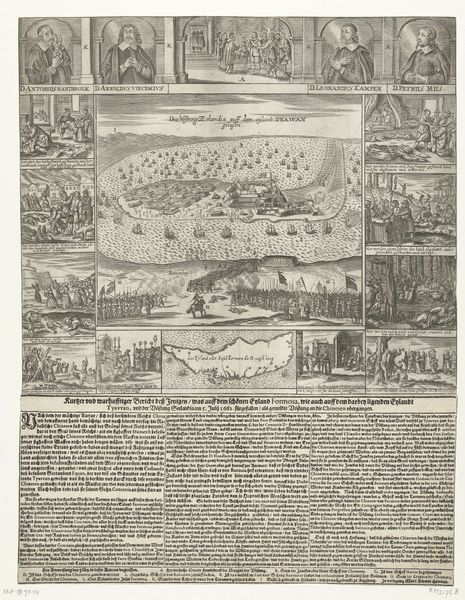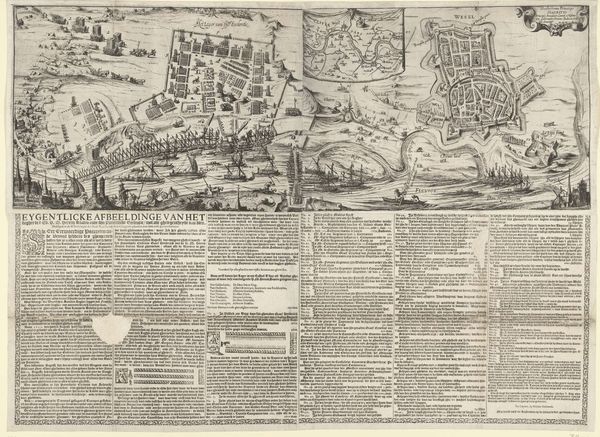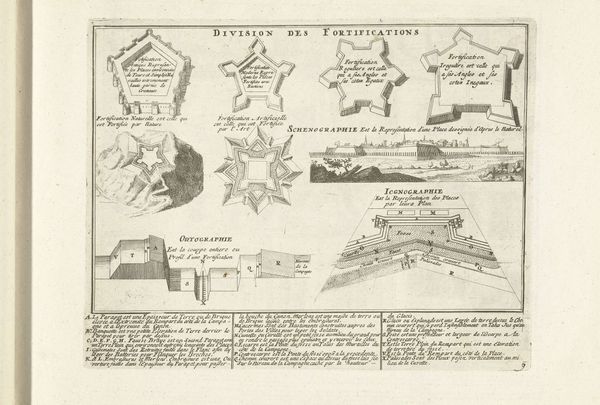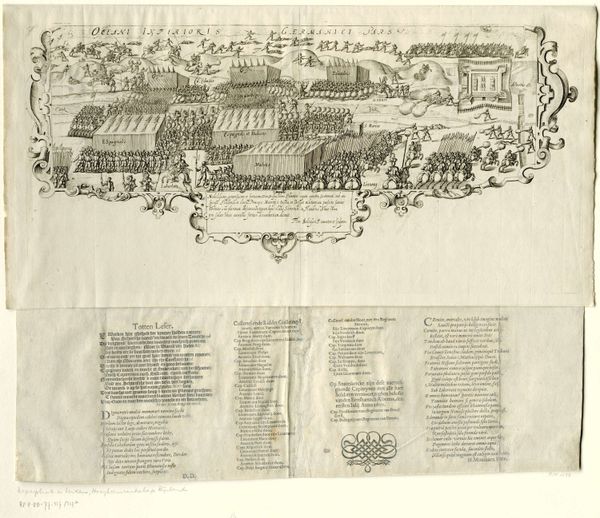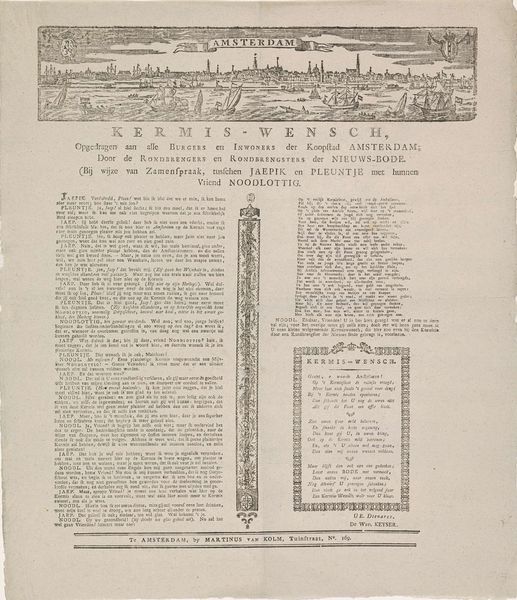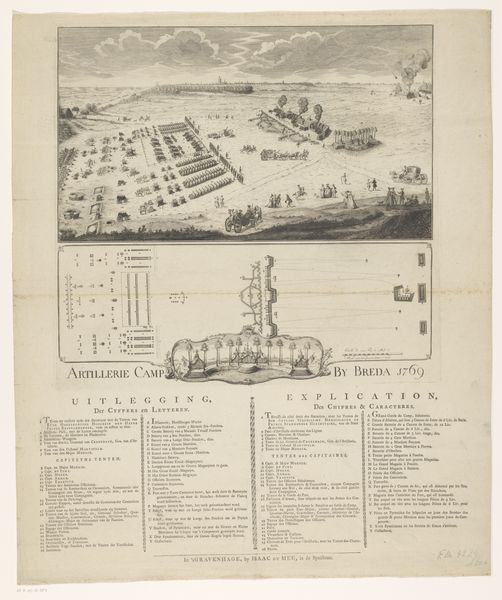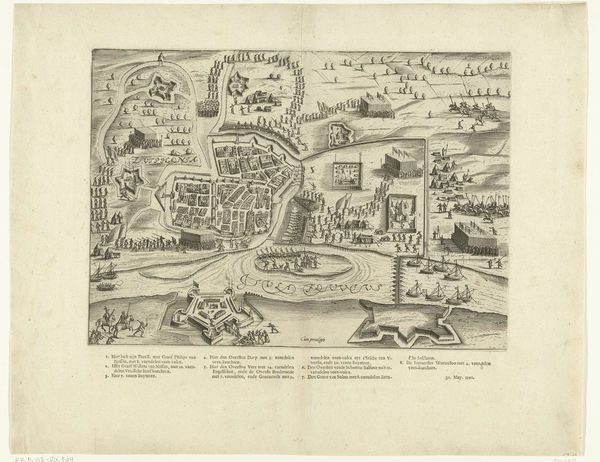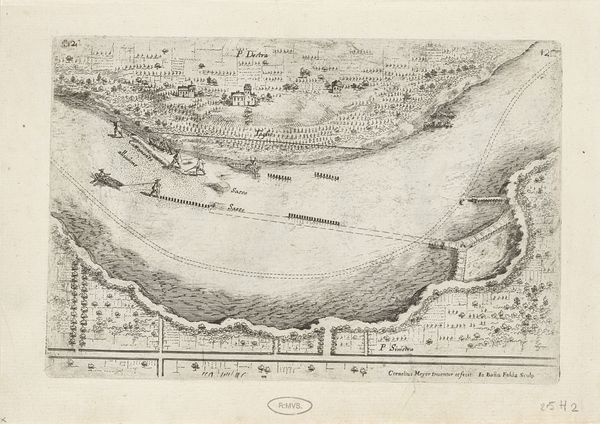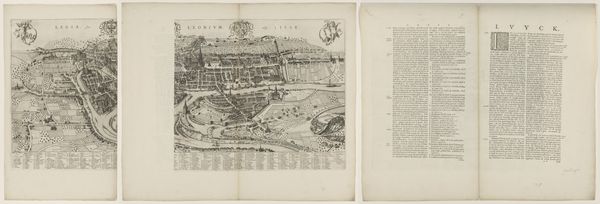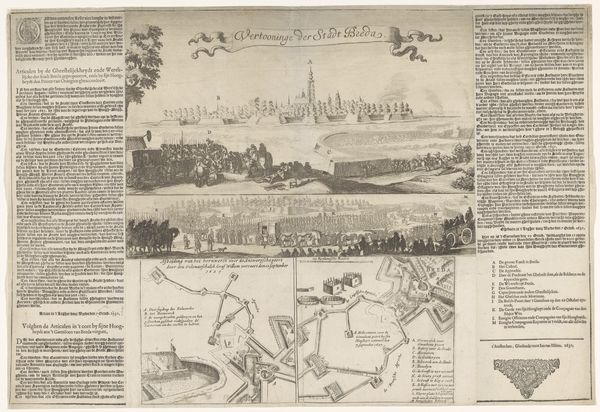
print, etching, engraving, architecture
#
baroque
# print
#
etching
#
perspective
#
cityscape
#
engraving
#
architecture
Dimensions: height 220 mm, width 393 mm, height 502 mm, width 404 mm
Copyright: Rijks Museum: Open Domain
Editor: This is a print from 1752 called "Gezicht op het Buitenhof en het Binnenhof," or "View of the Outer Court and Inner Court," by P.A. de Saint Hilaire Mallet. It depicts a cityscape with lots of descriptive text surrounding it. The composition feels very formal and ordered. What cultural echoes do you hear when looking at it? Curator: This print strikes me as a deliberate attempt to construct a specific image of power and order. Notice how the artist uses perspective not just to depict space, but to communicate hierarchy. The Binnenhof, the seat of government, is meticulously detailed, almost like a character portrait, front and center. Editor: It’s interesting you see it as constructed, not just representational. Can you explain? Curator: Certainly. Consider the prominence of text. It is like a chorus interpreting the significance of what’s visualized. It anchors meaning. Also consider the formal arrangement of trees and water - the Dutch Republic heavily invested in controlling and shaping the natural world, a projection of its political prowess. What emotions do those elements conjure in you? Editor: I see that. The garden design emphasizes control and precision. There's a feeling of... officialness. Almost bureaucratic. But it also seems intended for a specific audience. Curator: Precisely. Prints like this were circulated among elites, reinforcing a shared visual language of status and governance. It visually codified and legitimized their place in the social order. The symbols present affirm and reaffirm societal values for future generations to internalize, influencing self-perception and group identity. Editor: That’s fascinating. I initially just saw a historical landscape, but now I see how meticulously it constructs a narrative about power and cultural memory. It's less of a depiction and more of an…assertion. Curator: Exactly! A carefully crafted visual argument about the enduring legacy of the Dutch Republic. Analyzing its symbolism encourages deeper consideration about the interplay between identity and image across time.
Comments
No comments
Be the first to comment and join the conversation on the ultimate creative platform.

